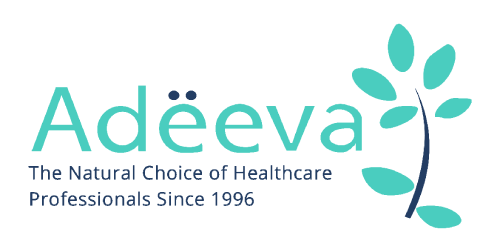
LMU 85 – Unveiling the Diet-Acne Connection: A Skin-Deep Exploration
Source: Various Journals of Dermatology (see references below)
Lifestyle Medicine Update (March 29, 2018)
Introduction
Embarking on a journey to clearer skin often involves scrutinizing various factors, including genetics, hormones, and skincare routines. However, a new spotlight now emerges, casting a revealing glow on the relationship between diet and the frequency and severity of acne breakouts. This illuminating revelation challenges the traditional narrative, steering us toward a deeper understanding of the potent interplay between what we consume and the canvas of our skin. As we navigate the emerging evidence that unveils diet’s key role in the realm of acne, let us embark on a captivating exploration of dietary factors that either exacerbate or alleviate this common skin woe.
The Culprit Within: Refined Sugars Fuelling Acne Flames
In the intricate dance of dietary dynamics, refined sugars emerge as a formidable adversary. These sugars, notorious for propelling insulin levels skyward, inadvertently fuel the overproduction of sebum within sebaceous glands. Sebum, when produced excessively, obstructs pores, creating a fertile breeding ground for acne-causing infections. The link between insulin and acne is further accentuated by the surge in testosterone secretion—attributed to high insulin levels. Testosterone, a male hormone, contributes to escalated sebum production, escalating both the frequency and intensity of acne infections. The insulin cascade doesn’t stop there; it amplifies the release of IGF-1, a hormone that not only augments testosterone secretion but also activates cortisol—the infamous stress hormone notorious for exacerbating acne. Furthermore, high sugar diets activate the mTOR pathway, causing sebaceous glands to proliferate swiftly, ultimately heightening sebum production and pore blockage.
Research efforts, meticulously conducted on acne patients, delve into the impact of refined sugars on the complexion. A discernible association emerges between high-glycemic-index foods—infused with sugary elements—and extended acne duration. Conversely, two randomized controlled trials establish a positive correlation between low-glycemic foods and reduced acne risk. These low-glycemic victuals include an array of options, ranging from legumes, non-sweet vegetables, low-carbohydrate/high-fiber cereals, to non-sugar containing beverages. Examining the dietary habits of societies untouched by acne, such as the Kitavan Islanders and the Aché hunter-gatherers of Paraguay, uncovers a common thread—an adherence to low-glycemic diets enriched with fresh fruits, vegetables, and lean proteins.
Dairy’s Dilemma: L-Leucine and the M-TOR Pathway
Dairy products emerge from the shadows as potential protagonists in the acne saga. Rich in the amino acid L-Leucine, dairy traverses a path like high insulin, activating the mTOR pathway within sebaceous glands. This activation accelerates cell division and the subsequent surge in sebum production. A startling revelation surfaces as dairy consumption in North American diets frequently converges with hyperglycemic sugary carbohydrates or pure sugar, thereby intensifying mTOR activation. This synergy contributes to the high prevalence of acne within developed nations.
Chocolate’s Culprit: The Sugar-Milk Nexus
Chocolate, although revered for its indulgent allure, stands accused of accentuating acne breakouts. The presence of milk and sugar within milk chocolate stands as a potential catalyst for this correlation. While cocoa’s role remains undetermined, it’s the sugary and milky components that may drive acne exacerbation in this scenario.
Ocean’s Bounty: Omega-3 Fats and Acne Alleviation
In the realm of dietary remedies, fish and seafood take the stage as allies against acne flare-ups. Evidence suggests a promising correlation between increased consumption of fish and seafood and diminished acne outbreaks, especially when replacing red meat and pork.
The Wisdom of Dr. B Melnik: Navigating Dietary Changes
Dr. B Melnik, a prominent voice in dermatology, shines a light on the comprehensive dietary strategy to combat acne. His words resonate powerfully, urging a reduction in total energy, glucose, and fat intake. Diminishing insulin/IGF-1 signalling, primarily mediated by high dairy protein consumption, is a pivotal step. Equally crucial is the limitation of total leucine uptake, predominantly stemming from animal-derived food. This holistic approach calls for heightened consumption of vegetables and fruits and a reduction in animal-based foods.
The Vitamins and Minerals Arsenal: Supplements and Skin
Venturing beyond dietary shifts, the realm of vitamins and minerals springs forth as a potential tool against acne. Multivitamins and minerals, fortified with antioxidants, offer promise. Studies hint at the potential benefits of zinc, selenium, and vitamin E supplementation in curbing acne flare-ups and rectifying common vitamin A deficiencies. These nutrients, in conjunction with B-vitamins, orchestrate a symphony that contributes to healthy and radiant skin.
Conclusion: The Palate-Pores Connection
In the tapestry of skincare, diet emerges as an essential thread, intricately weaving its impact on acne frequency and severity. Genetic and hormonal factors may play their roles, but the dietary terrain adds a layer of complexity to this narrative. As journals of Dermatology unveil the profound impact of diet on acne, the paradigm shifts, urging us to embrace an enlightened perspective. Armed with the knowledge that refined sugars, dairy, and specific foods contribute to acne, we wield the power to chart a transformative course. The keys to unlocking radiant skin lie within our dietary choices—a journey of empowerment that intertwines the palate and pores, revealing a path to clearer and healthier skin.
References
- Pappas A. The Relationship of Diet and Acne. Dermatoendocrinology Sept-Oct;1(5):262-267 (2009) [Link to study](https://www.ncbi.nlm.nih.gov/pmc/articles/PMC2836431/)
- Burris J, Rietkerk W, Woolf K. Acne: the role of medical nutrition therapy. J Acad Nutr Def Mar; 113(3):416-30 (2013) [Link to study](https://www.ncbi.nlm.nih.gov/pubmed/23438493)
- Kuhcarska A et al. Significance of diet in treated and untreated acne vulgaris. Advances in Dermatology. April;33(2):81-86 (2016) [Link to study] (https://www.ncbi.nlm.nih.gov/pmc/articles/PMC4884775/)
- Melnik B. Dietary Intervention in Acne. Dermatoendocirnology. Jan1; 4(1): 20-32 (2012) [Link to study](https://www.ncbi.nlm.nih.gov/pmc/articles/PMC3408989/)
Eat Smart, Live Well, Look Great,
Dr. Meschino

Dr. James Meschino
ABOUT THE AUTHOR
Dr. James Meschino, DC, MS, ROHP, is an educator, author, and researcher having lectured to thousands of healthcare professionals across North America. He holds a Master’s Degree in Science with specialties in human nutrition and biology and is recognized as an expert in the field of nutrition, anti-aging, fitness, and wellness as well as the author of numerous books.


